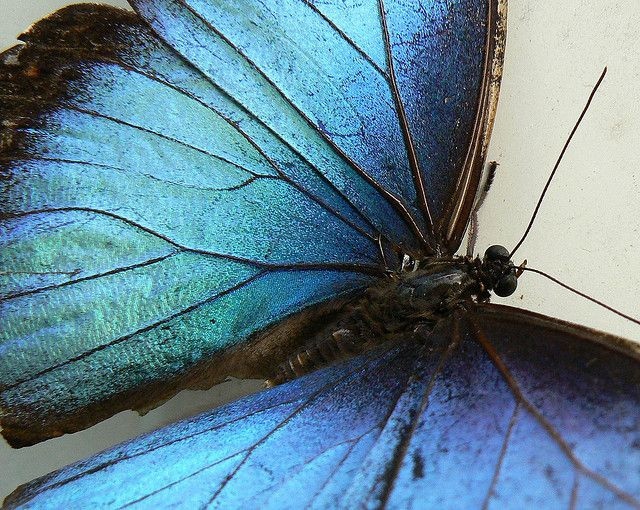Butterfly Set To Transform Nanotechnology, Photonics: Researchers Say Morpho Butterfly Wings Could Inspire Self-Cleaning Fabrics, Security Tags

The iridescent wings of the tropical blue Morpho butterfly could inspire a new generation of sensors, fabrics, cosmetics, and displays. In a new study published in the journal PNAS, researchers examine the fascinating properties of the nanostructures that give the scales their metallic shine. The researchers believe that the surprising chemistry and structure of the wings could be replicated to create everything from self-cleaning surfaces to photonic security tags.
In an accompanying press release, Principal Investigator Radislav Potyrailo said that the nanostructures exhibit a unique response to vapor molecules. A “selective response” allows the tree-like structures to sense and interact with such molecules in a variety of different ways. If implemented into new materials and technologies, this structural versatility could significantly advance a vast array of products.
"Our interdisciplinary team of physicists, chemists, biologist, and materials scientists was able to unveil the existence of surface polarity gradient on iridescent Morpho butterfly scales,” Potyrailo explained. "This discovery further allowed us to bring a multivariable perspective for vapor sensing, where selectivity is achieved within a single chemically graded nanostructured sensing unit, rather than from an array of separate sensors."
According to Pete Vukusic, a professor of physics at the University of Exeter, bio-inspired nanotechnology is nothing new. For some time, biomimicry has been used by engineers, inventors, and designers to create products of extreme durability and effectiveness. The success is due to the simple fact that nature has perfected these patterns, mechanisms, and designs through extensive trial and error over millions of years.
"Understanding iridescence in butterflies and moths has revolutionized our knowledge of natural photonics,” Vukusic said. “By using design ideas from nature we are able to work towards the development of applications in a range of different technologies. In this study the team discovered a new mechanism in photonic vapor sensing that demonstrates combined physical and chemical effects on the nanoscale."
The discovery suggests that even in highly specialized fields of inquiry like nanotechnology and photonics, evolution can still teach us a valuable lesson.
Source: Radislav A. Potyrailo, Timothy A. Starkey, Peter Vukusic, Helen Ghiradella, Milana Vasudev, Timothy Bunning, Rajesh R. Naik, Zhexiong Tang, Michael Larsen, Tao Deng, Sheng Zhong, Manuel Palacios, James C. Grande, Gilad Zorn, Gregory Goddard, and Sergey Zalubovsky.Discovery of the surface polarity gradient on iridescent Morpho butterfly scales reveals a mechanism of their selective vapor response. PNAS 2013 ; published ahead of print September 9, 2013, doi:10.1073/pnas.1311196110



























